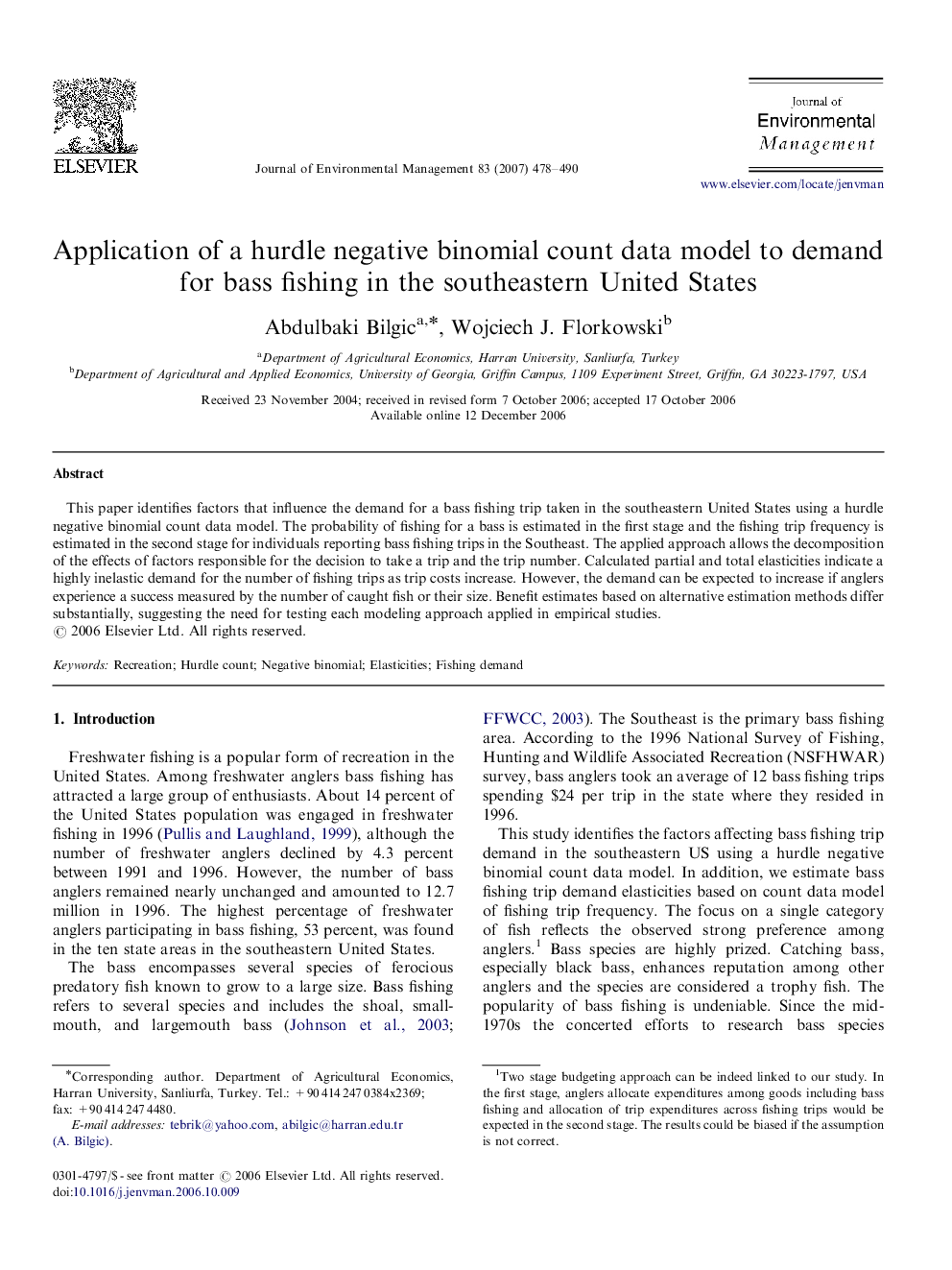| Article ID | Journal | Published Year | Pages | File Type |
|---|---|---|---|---|
| 1058728 | Journal of Environmental Management | 2007 | 13 Pages |
This paper identifies factors that influence the demand for a bass fishing trip taken in the southeastern United States using a hurdle negative binomial count data model. The probability of fishing for a bass is estimated in the first stage and the fishing trip frequency is estimated in the second stage for individuals reporting bass fishing trips in the Southeast. The applied approach allows the decomposition of the effects of factors responsible for the decision to take a trip and the trip number. Calculated partial and total elasticities indicate a highly inelastic demand for the number of fishing trips as trip costs increase. However, the demand can be expected to increase if anglers experience a success measured by the number of caught fish or their size. Benefit estimates based on alternative estimation methods differ substantially, suggesting the need for testing each modeling approach applied in empirical studies.
